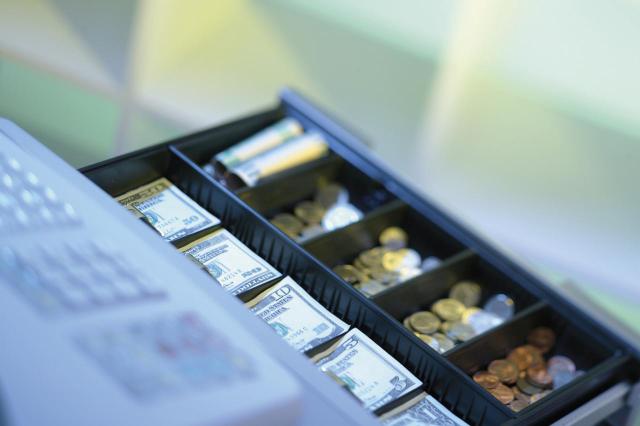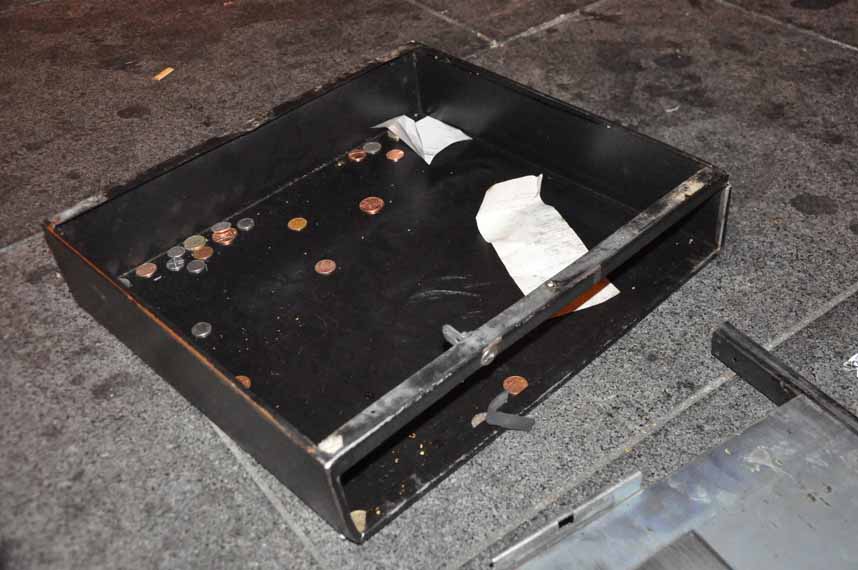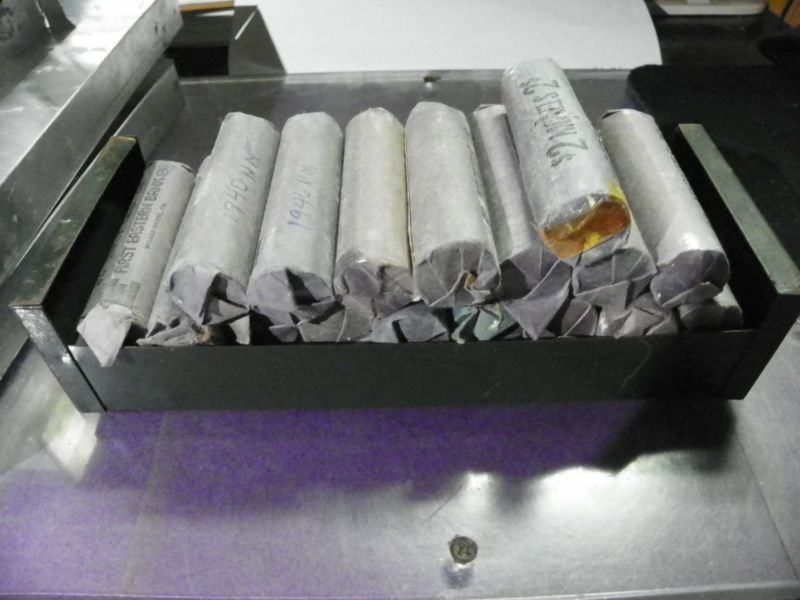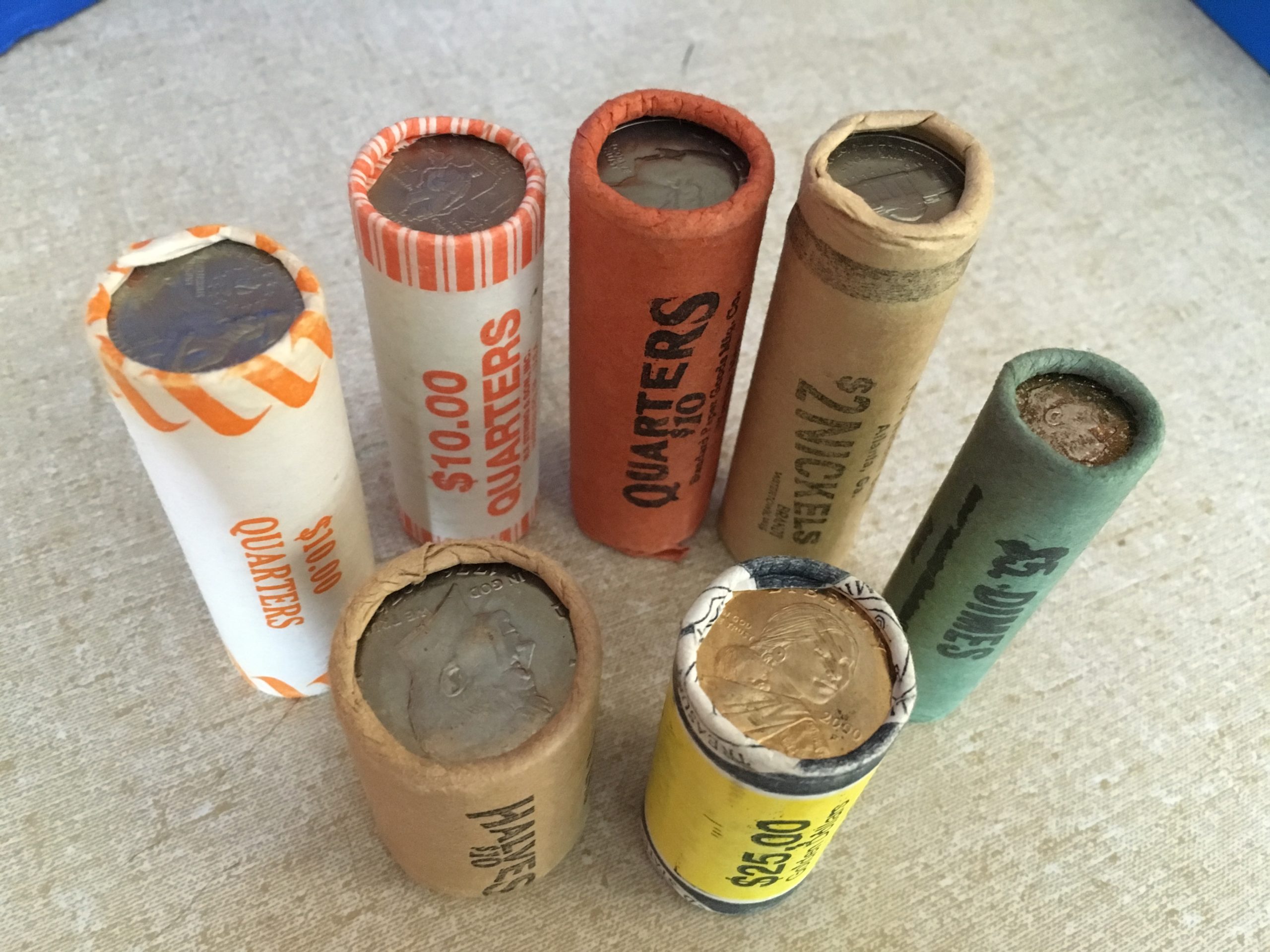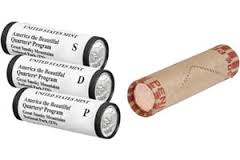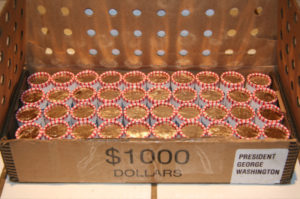Come On!
For anyone that has ever worked retail, you know that there are two kinds of coin rolls. The ones that you can pry open, and the ones you crack on the corner of the drawer and hope that the drawer does not break off! For those of you that have not, let me break it down for you.
Circulated Rolls
Circulated rolls are the unexciting kind. These are the rolls that we made up as kids (or adults). We got the awesome flat rolls from the bank, counted out the coins we need to fill them and then shoved them into the roll. You bend down the corners of the roll and BAM, the teller at the bank gives you paper money! A lot lighter and easier to buy candy with! The coins in these rolls came from circulation. From the cash drawers, out pants, couch cushions, and foot wells of cars. It is usually grimy and dirty, it is CIRCULATED COINS, and although there can be treasures in them, 99.8% of time, it is just cash, plain and simple!
Uncirculated Rolls
Uncirculated rolls are the other kind. Brief timeline. US Mint makes coins, sends them to the Federal Reserve in large bags, and the Fed rolls the coins, well the machines at the Fed rolls the coins (no humans). These rolls are all composed of the same date and same mint coins. The coins are designed for circulation, but have not been circulated yet. Uncirculated means that a coin is still fresh from being made and has yet to be used in everyday commerce to buy things. In the 1960’s, uncirculated rolls became an inflated investment bubble as prices were driven to absurd levels for modern coins. Nowadays there are not that inflated.
Nevertheless, the coins are uncirculated, so that is a plus.
Why Do I Care?
However, original bank wrapped uncirculated rolls from the mid-1940’s and earlier can be quite valuable. It is extremely hard to find any from before 1940. But if you do it is possible that you have high-quality special coins in them. That is one of the main reasons we stress to clients that they should not open crimped rolls. The chance of the count of coins being off is extremely small. The Fed does not want to make a mistake with the value of each roll. As they are in charge of the US monitory system, so they like precision! If you break uncirculated rolls, be assured they will sell for less than an unbroken one. So please leave them as be. We can tell you if there is potential for a “find” in any roll, just be looking at the edge coins.
If you break uncirculated rolls, be assured they will sell for less than an unbroken one. So please leave them as be. We can tell you if there is potential for a “find” in any roll, just be looking at the edge coins.

